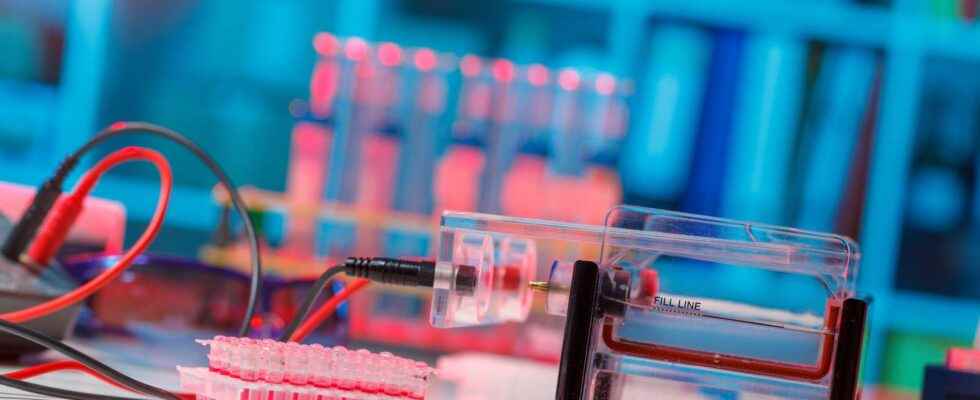Electrophoresis is a technique of separation particles electrically charged by differential migration under the action of an electric field. Depending on the characteristics of the molecule (size and geometry, electric charge) and the support chosen, the migration speed and the distance traveled in the matrix differ, which makes it possible to separate the ions and locate them.
What is electrophoresis used for?
Electrophoresis is used in particular in biology to separate and identify protein blood or in chemistry to purify soluble molecules. Electrophoresis of serum serum is thus a blood test commonly prescribed in case of suspected syndrome inflammatory, to detect an autoimmune disease or a liver or kidney problem. It is used to measure the level of five protein fractions:albumin, alpha-1 globulin, alpha-2 globulin, beta-globulins 1 and 2 and gamma-globulins.
Electrophoresis protocol
There are many electrophoresis protocols. It can be done in a thin U-tube (free-vein electrophoresis), but this does not give very precise results. In most cases, a support is used to guide and slow down the migration of molecules in order to improve their separation. The most common are paper, cellulose acetate, gels ofagarose and polyacrylamide.
The choice of support depends on the nature of the molecules to be identified. Very small molecules evolving in a gel, the mesh of which has pores that are too large, for example, will not be sufficiently slowed down and therefore poorly identified. Conversely, large molecules in too fine a mesh will be completely blocked. Generally speaking, agarose is used for large molecules, for example for separate DNA andRNA. L’acrylamide and bisacrylamide form much finer networks; they are therefore indicated to separate molecules of mass lower molecular weight like protein.
Electrophoresis under denaturing conditions
To simplify the interpretation of the results (especially in the case of proteins), electrophoresis is often used under denaturing conditions, where a denaturing agent is added so that all the molecules adopt the same configuration (unwound) and the same charge. electric. The separation then takes place only on the basis of molecular mass. The most common technique is called SDS-PAGE (for Poly-Acrylamide Gel Electrophoresis or polyacrylamide gel in the presence of SDS).
You will also be interested
Interested in what you just read?
.
fs4
